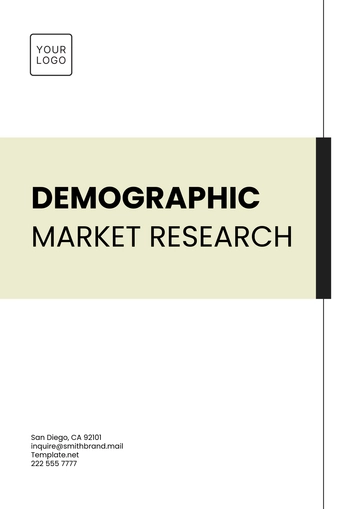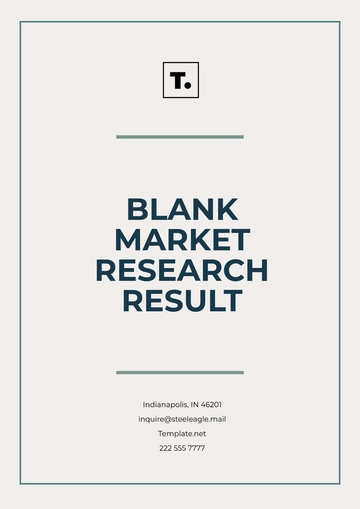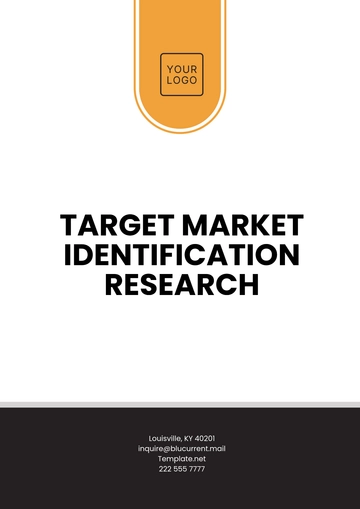Marketing In-Depth Market
Research Document
Executive Summary
A. Introduction
The document aims to provide an exhaustive analysis of the market dynamics surrounding [Product/Service]. The data and insights are generated through an amalgamation of surveys, interviews, data analytics, and market tracking.
B. Scope
The report covers an in-depth evaluation of market size, growth rates, customer preferences, and competitive positioning. It examines the product landscape, identifies target customer demographics, analyzes market trends, and evaluates the competitive landscape.
C. Key Findings
The market size for [Product/Service] is estimated to be around $500 million with an annual growth rate of 5%. Customers are increasingly leaning towards products that offer sustainability and tech-forward options.
Objectives
A. Understand Customer Needs and Preferences
To dig deeper into the customer psyche, we plan to engage with both existing customers and potential new customers through surveys and interviews.
B. Identify Market Trends and Opportunities
Our analysis covers a wide range of data points, from social media mentions to news trends to identify market shifts and potential investment opportunities.
C. Assess the Competitive Landscape
The report includes a SWOT analysis of competitors, breaking down their marketing strategies, customer relationships, and brand positioning.
D. Recommend Marketing Strategies
Based on the data collected and the insights gained, the research concludes with actionable marketing strategies designed to give [Your Company Name] a competitive edge.
Methodology
A. Research Design
The research uses a mixed-methods approach, incorporating both qualitative and quantitative data.
B. Data Analytics
Sales records for the past five years were analyzed, along with website analytics to gauge user behavior.
C. Market Tracking
We utilized tools like Google Alerts and specialized market tracking software to keep up with market changes in real-time.
D. Sampling Method
Stratified random sampling was used for the surveys, while purposive sampling was applied for the interviews to ensure relevance and expertise.
Market Overview
A. Market Size
The market size for [Product/Service] has been meticulously calculated through a composite method involving sales data, the number of transactions, and the average transaction value. As of now, the market size is pegged at approximately $500 million.
Data Type | Value |
Sales Data | $450 million |
Number of Transactions | $2 million |
Average Transaction Value | $250 |
B. Market Growth Rate
The market has seen a steady annual growth rate of 5%. This was calculated by observing year-over-year increases in sales, volume, and transaction values.
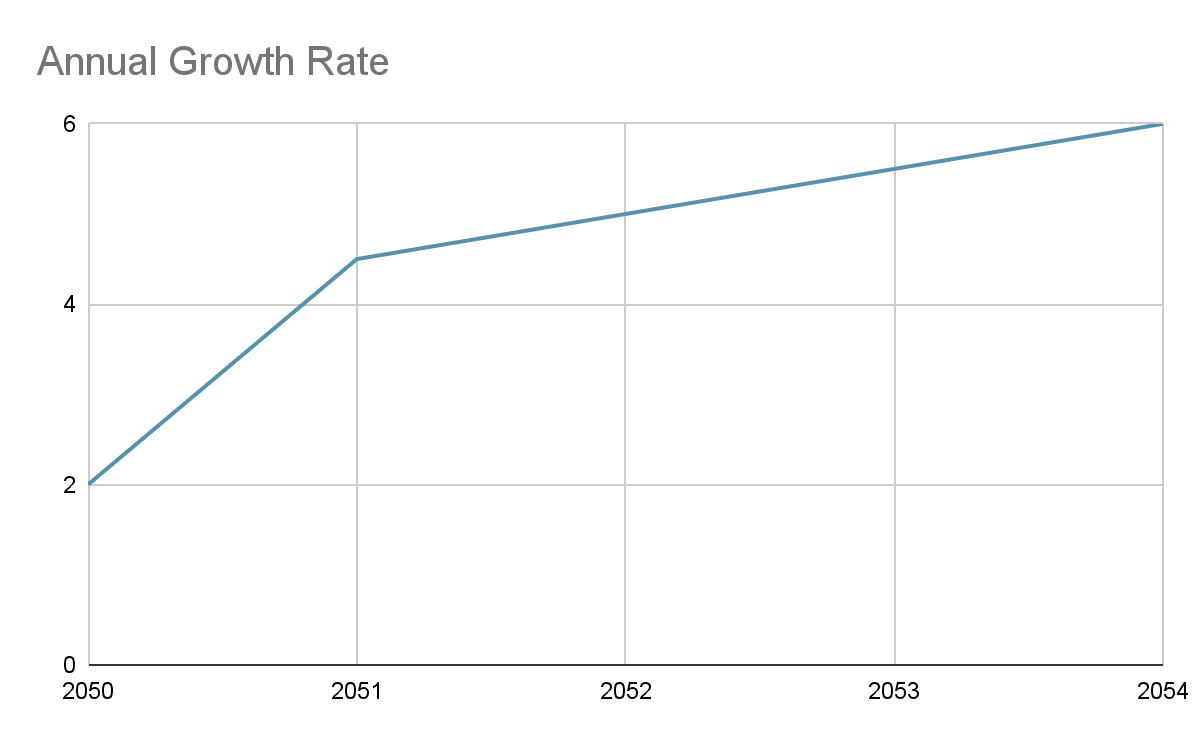
C. Market Drivers and Barriers
Market Drivers
Key drivers include:
Technological Advancements: Ease of use and integration with smart home systems are driving demand.
Regulatory Changes: New regulations regarding safety and sustainability have bolstered the market.
Shifts in Consumer Behavior: An increasing preference for premium, high-quality products is evident.
Market Barriers
Key barriers include:
Competitive Analysis
A. SWOT Analysis
Company A
Strengths include brand equity and a robust distribution network. Weaknesses are primarily high cost and less focus on sustainability.
Strengths: Brand equity, robust distribution network
Weaknesses: High cost, less focus on sustainability
Opportunities: Expansion to emerging markets
Threats: New entrants with cheaper products
Company B
Strengths are excellent customer service and a strong online presence. Weaknesses include a narrow product range and higher prices.
Strengths: Excellent customer service, strong online presence
Weaknesses: Narrow product range, higher prices
Opportunities: Diversification of product line
Threats: Decreasing brand loyalty
Company C
Strengths lie in their innovative approach to product development. Weaknesses include a lower market share and less effective marketing strategies.
Strengths: Innovative approach to product development
Weaknesses: Lower market share, ineffective marketing
Opportunities: Strategic partnerships
Threats: Fluctuating market conditions
Customer Segmentation
A. Customer Profiles
Category A: Young Professionals
Highly tech-savvy, prefer online shopping, and value brand reputation.
Demographics: Aged 25-35, urban dwellers
Preferences: High-tech features, brand reputation
Behavior: Prefers online shopping, quick decision-making
Category B: Middle-Aged Adults
Prioritize quality and durability, often shop in retail stores, and are less price-sensitive.
Demographics: Aged 36-55, suburban or rural residents
Preferences: Quality, durability
Behavior: Prefers retail stores, brand loyalty
Category C: Seniors
Prefer traditional shopping methods, are highly price-sensitive, and prioritize product longevity.
Demographics: Aged 55+, mostly retirees
Preferences: Value for money, durability
Behavior: Traditional shopping methods, slower decision-making
Market Trends
A. Trend Analysis
We noted a significant shift towards online shopping, with 65% of our survey respondents indicating a preference for buying online. Another significant trend is the increasing demand for sustainable products.
B. Digital Transformation
Online shopping has seen an increase of about 65% based on our survey. This trend seems to be driven by convenience, discounts, and a wide array of choices available online.
C. Sustainability
Around 75% of our survey respondents indicated that sustainability plays a significant role in their buying decisions.
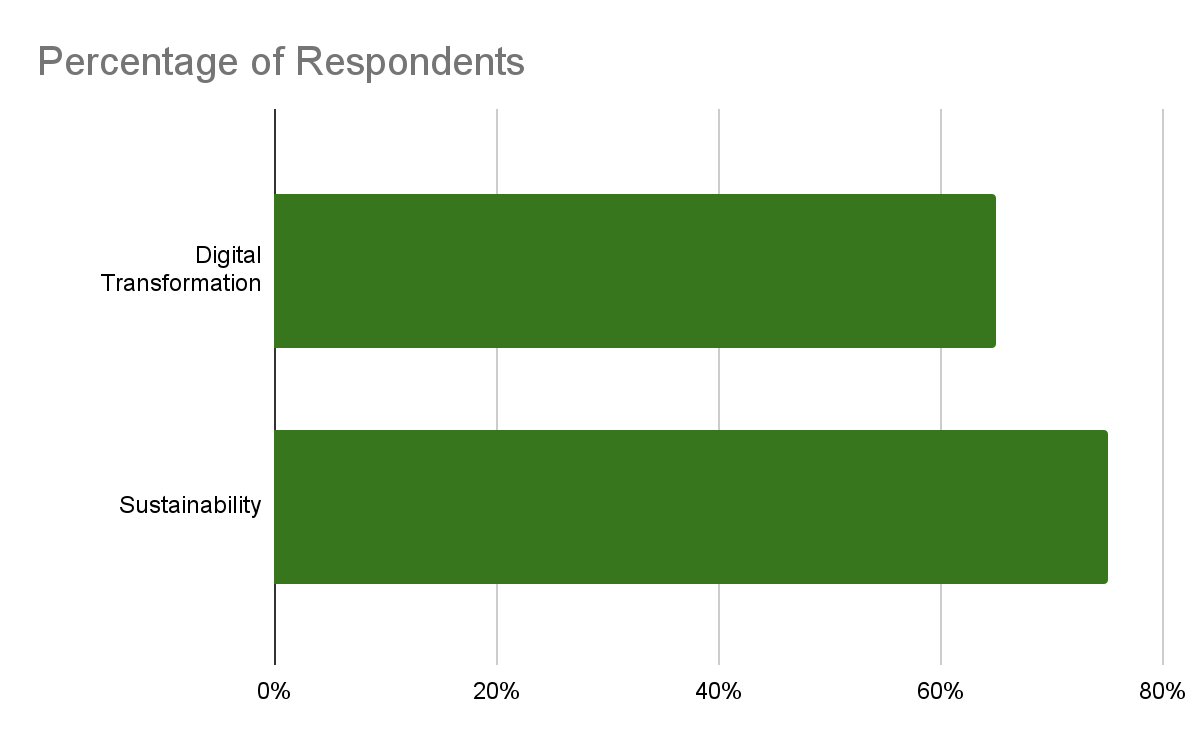
Recommendations
A. Short-term Strategies
SEO and Content Marketing: Improve online visibility by investing in search engine optimization and producing high-quality content that engages potential customers.
Limited-Time Offers: Introduce seasonal or festival-based offers to attract cost-sensitive segments of the market.
Long-term Strategies
Sustainable Product Line: Develop a line of eco-friendly products to tap into the rising consumer demand for sustainable options.
Influencer Partnerships: Establish long-term relationships with industry influencers and bloggers to build brand credibility and reach a wider audience.
Budget and Financial Projections
A. Budget Allocation
The budget for implementing the recommended strategies is as follows:
Strategy | Cost Estimate ($) |
SEO and Content Marketing | 50,000 |
Limited-Time Offers | 20,000 |
Sustainable Product Line | 100,000 |
Influencer Partnerships | 30,000 |
Miscellaneous | 10,000 |
Total Budget | 210,000 |
B. Financial Projections
Revenue Projections
Based on the recommended strategies, we project an annual revenue increase of approximately 10%.
ROI Projections
We expect an ROI of approximately 15% within the first year of implementing the new strategies.
Conclusion
The market research conducted provides a deep understanding of the prevailing market conditions, consumer preferences, and competitive scenarios. With the insights gained, [Your Company Name] can adopt targeted marketing strategies to improve brand value and market share.
Appendices
A. Survey Questionnaire
The complete set of questions asked in the survey is provided, along with the number of respondents for each question.
B. Interview Guidelines
A guide to how the interviews were conducted, including a list of questions and the rationale behind them.
C. Additional Charts and Tables
This includes any other relevant charts, tables, and data sets used in the analysis.
For further inquiries, please contact:
[Your Name]
[Your Company Name]
[Your Company Address]
Marketing Templates @ Template.net















